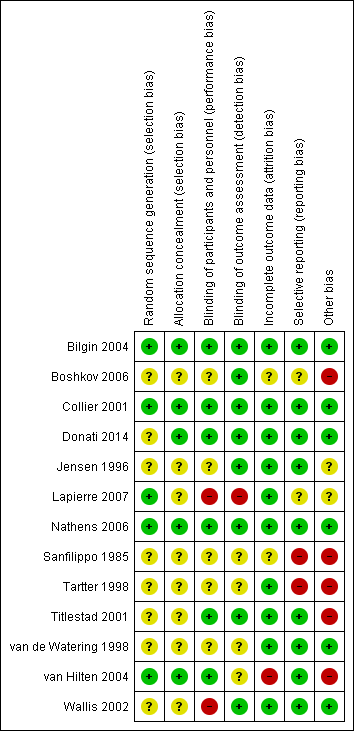Contenido relacionado
Revisiones y protocolos relacionados
Arturo J Martí‐Carvajal, Daniel Simancas‐Racines, Barbra S Peña‐González | 14 julio 2015
David A Henry, Paul A Carless, Annette J Moxey, Dianne O'Connell, Katharine Ker, Dean A Fergusson | 23 octubre 2001
Paul A Carless, David A Henry, Danielle M Anthony | 20 enero 2003
Akshay Shah, Susan J Brunskill, Michael JR Desborough, Carolyn Doree, Marialena Trivella, Simon J Stanworth | 22 diciembre 2018
David A Henry, Paul A Carless, Annette J Moxey, Dianne O'Connell, Barrie J Stokes, Dean A Fergusson, Katharine Ker | 16 marzo 2011
Jez Fabes, Susan J Brunskill, Nicola Curry, Carolyn Doree, Simon J Stanworth | 24 diciembre 2018
Paul A Carless, Fraser D Rubens, Danielle M Anthony, Dianne O'Connell, David A Henry | 16 marzo 2011
Michael J Desborough, Kathryn Oakland, Charlotte Brierley, Sean Bennett, Carolyn Doree, Marialena Trivella, Sally Hopewell, Simon J Stanworth, Lise J Estcourt | 10 julio 2017
Ewurabena Simpson, Yulia Lin, Simon Stanworth, Janet Birchall, Carolyn Doree, Chris Hyde | 14 marzo 2012
Ian Roberts, Karen Blackhall, Phil Alderson, Frances Bunn, Gillian Schierhout | 9 noviembre 2011
Respuestas clínicas Cochrane
Jane Burch, Sascha Köpke | 11 diciembre 2016
















